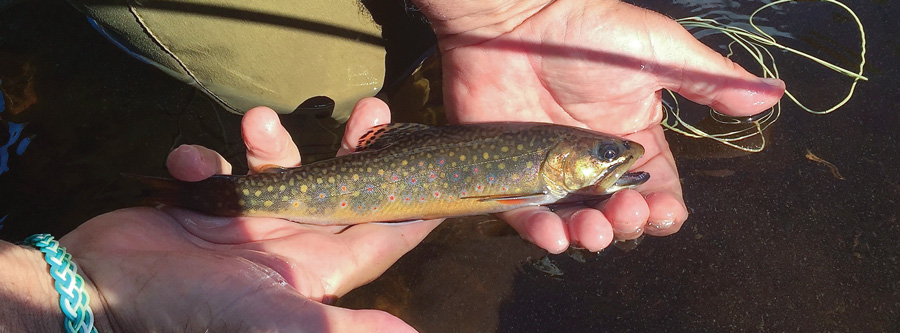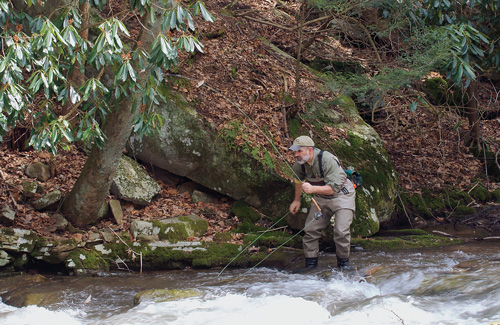I do not require a calendar to announce the arrival of spring. For me, the first day of spring is that afternoon when I once again find myself along the bank of Bonnie Brook, my little cane rod grasped in my hand. In the past, it has been a day in March, usually a week or so before the Vernal Equinox. It is a morning after another season’s stove wood has been split and stacked, a morning when the snow has melted in all but those places where the sun has not touched, a morning when the temperature has risen above forty-eight degrees, a temperature that I’ve selected as a signal to gather my gear and travel the short distance to the little stream.

There will be snow under the hemlock canopy and ice along the edges of the headwaters, but downstream, the sun will shine down upon the current as it passes through fallow fields, where the leafless branches of brambles, barberries and wild rose will pluck at the sleeves of my flannel shirt. Casting a bit of fur and feather into their hidey-holes, I hope to rouse a brook trout, or maybe a rainbow, or even a brown, still groggy from a winter of semi-hibernation.
The fish of Bonnie Brook are as wild as the mottled whorls of skunk cabbage breaking through the moist earth at this time of year. Although the official opening day is set by the state for April 8th, the little stream where I spend so much of my time is not stocked, and for this reason its fish are not regulated by the schedules of men.
I am sure to hold a trout or two by the time April arrives, but until then, the trout remain deep, not ready to look upward for a meal. For this reason, I’ll cast a pattern that imitates one of the many insects that swim along, crawl, or cling to the stream bottom. Those of us who fish with flies call these aquatic bugs “nymphs.”
Not until the purple-and-white violets decorate the banks of the brook will the first mayfly nymphs begin their mass exodus from the bottom of the stream. They’ll rise to the surface in what anglers call a “hatch.” Like caterpillars, the nondescript bugs will leave their nymphal shucks behind to become the tiniest of tiny winged insects.
Like a squadron of sailboats crossing the Nile, these wisps of fairy dust will dry their gossamer wings while they tack upon the breeze. By now, the water has warmed. Having shed their winter doldrums, the trout of Bonnie Brook take this opportunity to feast on this cornucopia of protein. This is when the angler must “match the hatch” to be successful.
It is a time that haunts the winter dreams of anyone who has ever cast a fly. For one trout may fixate on those mayflies floating on the surface, while another will only select those emerging from their exoskeletons, and still others may be interested in those mayflies continuing to rise from the streambed. Couple this with the fact that on many days more than one mayfly may be hatching at the same time, sometimes in different sexes and in varying sizes, and you can see why the pockets of many anglers bulge with boxes and boxes of different fly patterns!
Fly fishers have replaced the Latin names of mayflies with more descriptive monikers. During the first few weeks of April, Blue Quills, which seem to have a bluish tint to their wings, will appear on the little stream. They are soon followed by Quill Gordons, named for Theodore Gordon, the father of American fly fishing, and later in the month, by larger mayflies known as Hendricksons, named by another famous Catskill fly fisher, Roy Steenrod, for “the best friend a person could ever have.”
Although I frequent the stream throughout the month of March, it is the commencement of these “quill” hatches that truly marks the beginning of my fishing season. April can be dark and dank, but by the time the quills appear, I’ve put aside my heaviest clothing for rain gear and my sub-surface patterns in favor of what anglers call “dry” flies — patterns that float on or near the surface. With trout rising to feed on mayflies engaged in different stages of the hatch, it is hard to contain my excitement, but with the right pattern cast with a bit of skill, I just might watch a fish rise toward the surface to take my fly. Choose the wrong pattern and that same fish will sweep past, splashing a tail as if to say YOU CAN’T FOOL ME!
